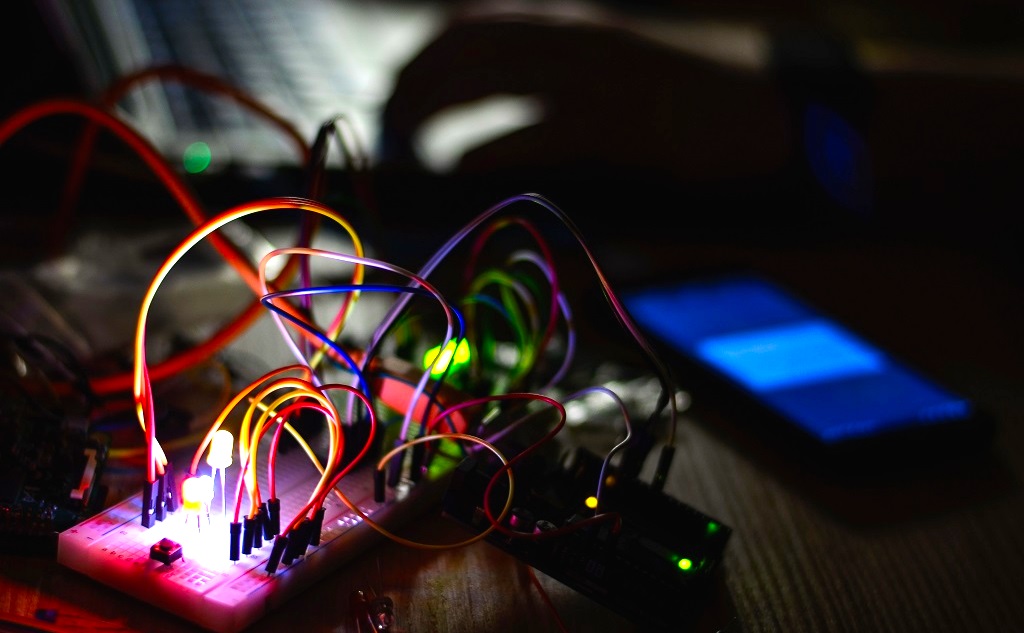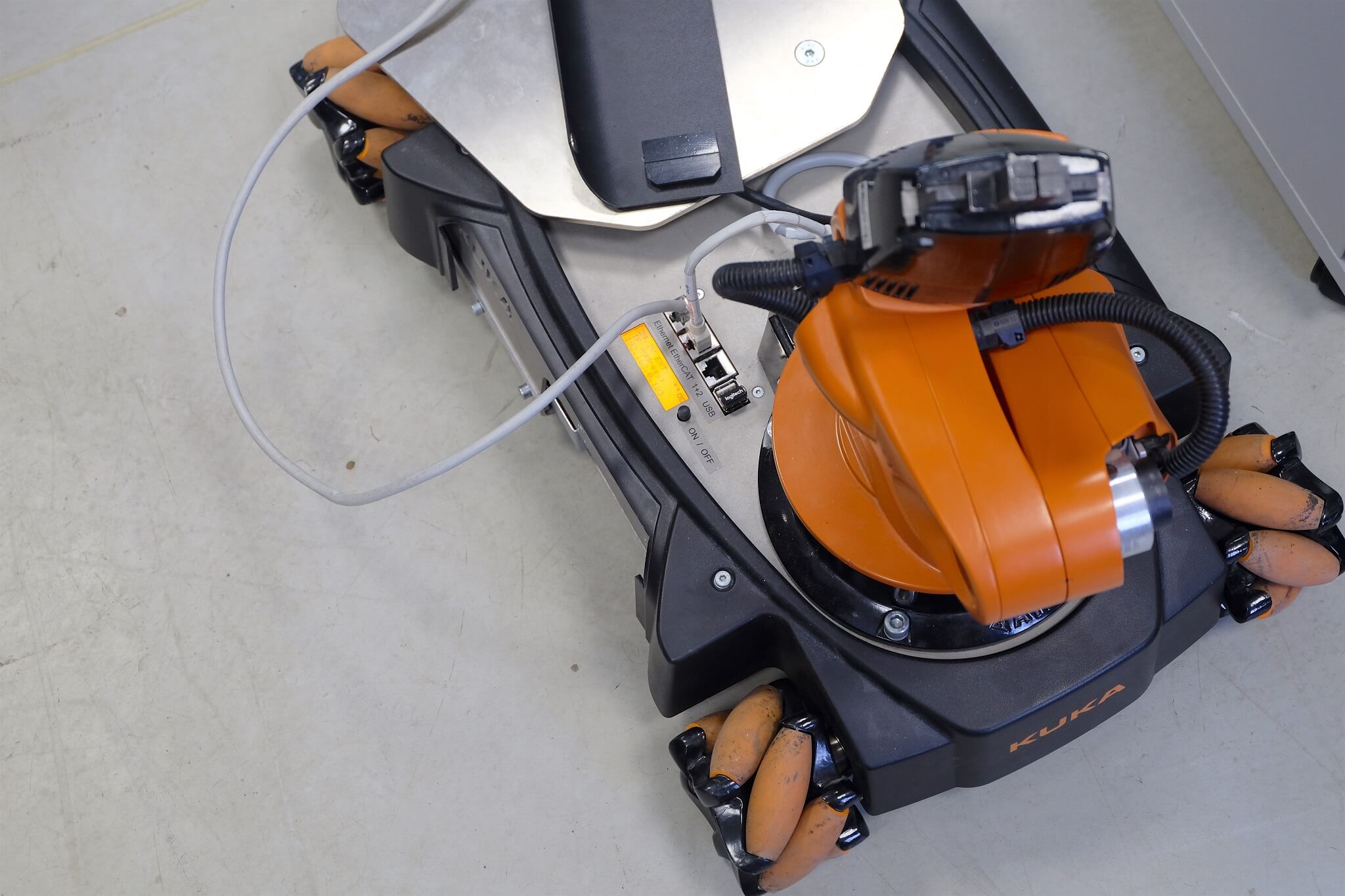
Photo: Victor Aznabaev / Unsplash.com
A few words about the Olympics
Purpose. Assess the knowledge of students and introduce them to the requirements of employers. Students develop in the chosen scientific field, working in international companies. The employer also wins - he does not need to re-educate trained specialists and meet newly-minted employees with the phrase: “Forget everything that you were taught at the university.”
Why participate. Winners get the opportunity to enter Russian universities without exams. You can get an internship in Yandex, Sberbank, IBS, Mail.ru and other large corporations. Last year, more than four hundred best participants received offers from Russian companies. Students who have proven themselves will be able to attend winter schools .
Who is involved. Students of all specialties - technical, humanitarian and natural sciences. In addition to graduates, graduate students, residents and students of foreign universities.
The format of the event. You can register before November 18th. The online qualifying stage will be held from November 22 to December 8, but you can skip it if you successfully complete at least two online courses from the list . The winners of the qualifying round will go to full-time competitions in large universities across the country, which are scheduled for January - March. The results of the “I am a Professional” Olympiad will be published in April on the project website .
This year the olympiad includes 68 directions. ITMO University specialists oversee five of them - Photonics, Information and Cybersecurity, Programming and Information Technologies, as well as Big Data and Robotics. We will talk more about the last two.
Big data
This area covers all technologies of the Big Data life cycle, including their collection, storage, processing, modeling and interpretation. The winners will be able to enter the ITMO University magistracy without exams for the programs: “Applied Mathematics and Computer Science”, “Digital Health”, “Big Data Financial Technologies” and several others .
Also, participants will have the opportunity to undergo an internship in the data scientist and data engineer specialties in partner companies. These are the National Center for Cognitive Development, Mail.ru, Gazpromneft STC, Rosneft, Sberbank and ER-Telecom.
“In recent years, Big Data has become more and more popular. The technologies of primary data collection and storage are developing, new digital mechanisms (in the field of IoT and social networks) for registering previously unobserved processes appear, ”comments Bukhanovsky Alexander Valerievich, Director of the MegaFaculty of Translation Information Technologies of ITMO University. “At the same time, attention is paid not only to how to organize the process of storage and use of data, but also to the substantiation of conclusions and decisions, as well as the creation of predictive models.”
What will be the tasks. They are being prepared by the team of the Megafaculty of translational information technologies of ITMO University. They take into account the fact that a Big Data processing specialist must have basic knowledge in probability theory and mathematical statistics, as well as machine learning. Have an idea of the logic and methodology of modern artificial intelligence systems and speak the languages R, Java, Scala, Python (or other tools for solving practical problems).
Next, we give an example of a problem from one of the stages of the Olympiad.
Example task: In a cluster of 50 servers, with 12 available cores on each. Resources between mappers and reducers are dynamically redistributed (there is no strict separation of resources). Write how many minutes MapReduce will work on such a cluster, which requires 1000 mappers. At the same time, the working time of one mapper is 20 minutes. If only 1 reducer is left in the task, then it will process all the data in 1000 minutes. The answer is accepted with an accuracy of one decimal place.
A. 44.6
B. 43.2
C. 41.6
D. 50.0
Correct answerC
How to prepare. You can start with the following resources:
- MathCAD Computer Mathematics System Guide . It may be useful for independent work with source codes for solving problems.
- Fundamentals of constructing and interpreting probabilistic models . Fundamental work - tells why probabilistic models need such a mathematical construct as σ-algebra.
- Gmurman V. Ye. “Probability Theory and Mathematical Statistics” . A simple and useful book that outlines the basics of the probabilistic calculus of random events.
A few more books on applied statistics for various fields of activity. Their authors simply but consistently explain the logic of solving problems of point and interval estimation:
List of references
- Khan G. "Statistical models in engineering problems"
- Orlov A. I. “Probability and Applied Statistics. Key facts
- Levin "Statistics for managers using Microsoft Excel"
- Fisher R. A. "Statistical methods for researchers"
- Kobzar A. I. Applied Mathematical Statistics
- Trukhacheva N.V. “Medical statistics”
- GOST for statistical calculations
Information can also be gleaned in thematic courses from the approved list on the website of the Olympiad.
Robotics
Robotics combines disciplines such as algorithms, electronics and mechanics. Choosing this direction is for those who are already studying or preparing to enter the magistracy and graduate school in the field of software engineering, applied mechanics, applied mathematics and computer science, or electronic engineering. Proven students can enroll in the Robotics , Digital Control Systems and Digital Production Systems and Technologies programs at our university for free.
What will be the tasks. Undergraduates and bachelors solve different tasks. However, all tasks test complex knowledge in the field of control theory, information processing and robot modeling. For example, participants will be asked to check the stability or controllability of the system, choose a structure or calculate the coefficients of the regulator.
“We’ll have to solve the direct or inverse kinematics problem for a mobile or manipulation robot, work with the Jacobian of the system and look for balancing moments in the joints at a given external load,” says Sergey Alexeyevich Kolyubin, deputy director of the IT Department of Computer Technology and Management at ITMO. “It will not do without programming tasks - you need to write a small program to simulate a robot or plan trajectories in Python or C ++.”
In the final, students must program the robot to perform tasks from partner companies: Russian Railways, Diacon, KUKA and others. Projects are connected with drones for land and air, as well as collaborative robots working in conditions of physical contact with the environment. The format of the competition resembles the DARPA Robotics Challenge . First, students work on a simulator, and then on real hardware.

Next, we consider several options for the tasks of the direction "Robotics", which students may encounter. Here are examples for applicants for graduate studies:
Example of task No. 1: A robot of automobile kinematics moves with a linear speed v = 0.3 m / s. The steering wheel is rotated through an angle w = 0.2 rad. If the radius of the robot wheels is r = 0.02 m, and the length and track of the robot are L = 0.3 m and d = 0.2 m, respectively, which will equal the angular speeds of each of the rear wheels w1 and w2, expressed in rad / s ?
Enter the answer in the format of two numbers separated by a space, up to the second decimal place, taking into account the sign.
Example of task No. 2: What can be a sign of astatism in a closed system with respect to the master action, if the analysis is carried out according to the structural scheme of the system?
the presence of aperiodic links in the open loop;
the presence in an open loop of ideal integrating links;
the presence in an open circuit of vibrational and conservative links.
And here are the tasks for entering graduate school or residency:
Example of task No. 1: The figure shows a robot manipulator of excessive kinematics with 7 rotational joints. The figure shows the coordinate system of the robot base {s} with the y axis vector perpendicular to the page plane, the coordinate system {b} is connected to the flange and collinear with {s}. The robot is shown in a configuration in which the values of the angular coordinates of all links are 0. The screw axes for the seven kinematic pairs are shown in the figure (positive direction counterclockwise). The axes of joints 2, 4 and 6 are aligned, the axes of joints 1, 3 5 and 7 are identical to the axes of the initial coordinate system of the base. Link sizes L1 = 0.34 m, L2 = 0.4 m, L3 = 0.4 m, and L4 = 0.15 m.
Example of task No. 2: For more stable operation of the simultaneous localization and mapping algorithm (SLAM) of mobile robots based on particle filters, the developers decided to use the resampling wheel resampling algorithm. At a certain point in the operation of the algorithm, a sample of 5 “particles” remained in memory with weights w (1) = 0.5, w (2) = 1.2, w (3) = 1.5, w (4) = 1, 0 and w (5) = 0.8. At what minimum threshold value of the effective sample size at this iteration will the resampling mechanism start. Write down the answer in decimal format with an accuracy of one decimal place.
How to prepare. You can evaluate your knowledge and prospects using the checklist. Participants of the direction "Robotics" must:
- Know the principles of modeling robots, the characteristics of modern sensors and methods for obtaining sensory information.
- To know and be able to put into practice the methods and algorithms of trajectory planning and automatic control, as well as the processing of sensory information.
- Have structural and object-oriented programming skills. Be able to work in development environments for robotic systems.
- Know the principles, key characteristics and features of the computing part, drives and sensors of modern robots. Have skills in planning and setting up experiments.
To "pull up" any of the areas, you can pay attention to webinars from the official site . Some tasks from previous olympiads are analyzed there. There is also specialized literature, for example:
- Kolyubin S. A. “Dynamics of robotic systems”
- Borisov O.I., Gromov V.S., Pyrkin A.A. "Methods for managing robotic applications"
- Miroshnik I.V. “Theory of automatic control. Linear Systems »
- Bruno Siciliano "Robotics: Modeling, Planning and Control"
More books
- Miroshnik I.V. “Theory of automatic control. Nonlinear and optimal systems "
- Yurevich E. I. "Fundamentals of Robotics"
- Etienne Dombre "Modeling, Performance Analysis and Control of Robot Manipulators"
- Mark Spong, Seth Hutchinson "Robot Modeling and Control"
- Bruno Siciliano Springer Handbook of Robotics
- Sebastian Thrun, Wolfram Burgard, Dieter Fox "Probabilistic robotics"
And online courses at Openedu, Coursera and Edx
- Control of mechatronic and robotic systems
- Linear automatic control systems
- Fundamentals of Mechatronics and Robotics
- Methods for processing navigation measurement information
- Programming Algorithms and Data Structures
- Elements of automatic control systems
- Theory of automatic control. Nonlinear automatic control systems
- Modeling processes and systems. Nonlinear dynamic systems
- Robotics Foundations I - Robot Modeling
- Robotics
- Robotics: Dynamics and Control
- Robotics: Perception
- Control of mobile robots
- Robotics: Kinematics and Mathematical Foundations
- Autonomous mobile robots
Additional information on the Olympiad:

